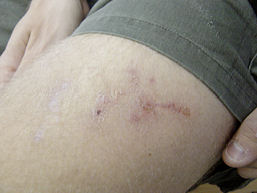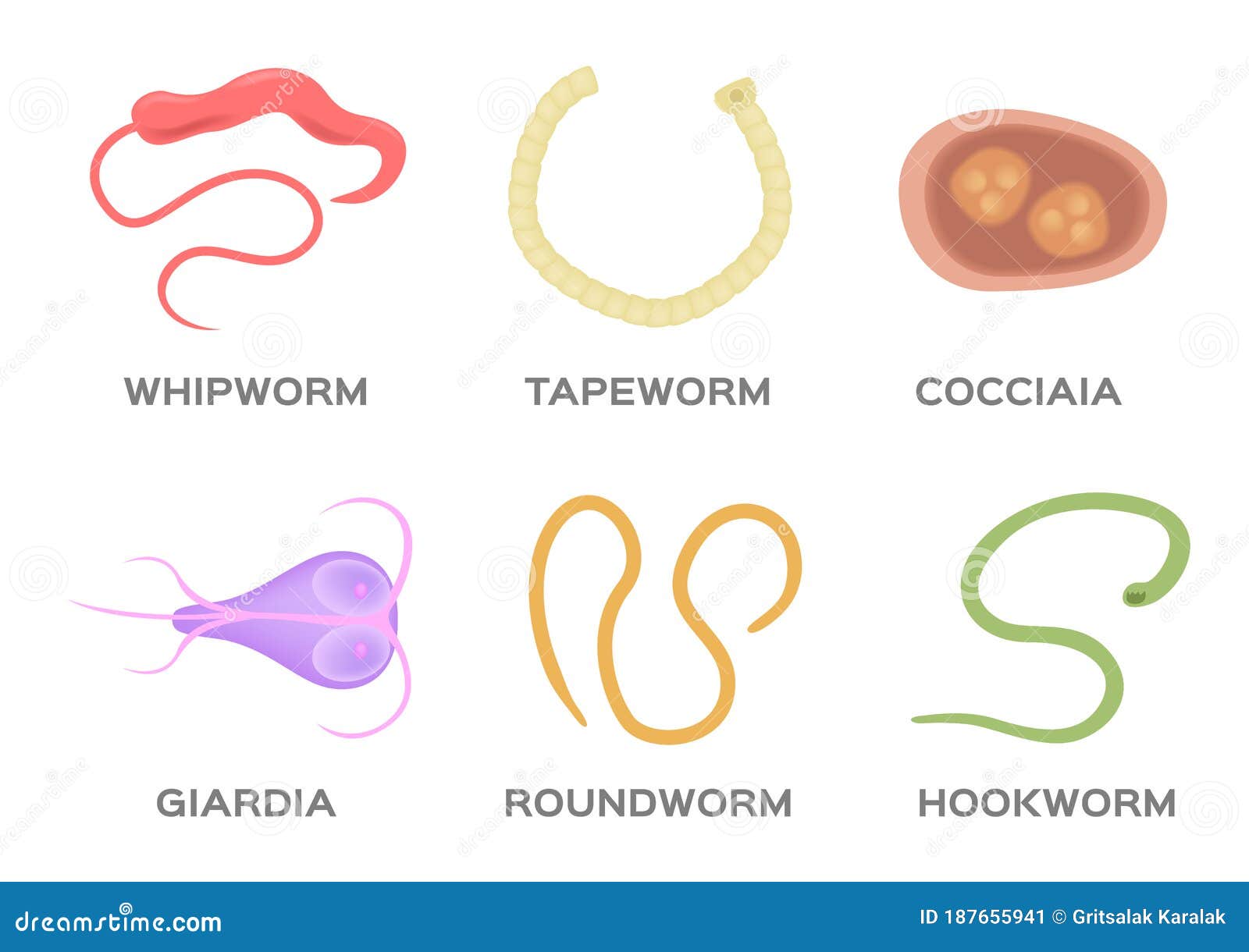

When the infection is long term, it can cause iron deficiency and anemia presenting with pallor, chlorosis (greenish-yellow skin discoloration), hypothermia, spooning nails and tachycardia.Symptoms of infections such as fever, wheezing, chest pain.Hypoproteinemia (low level of protein in the blood) leading to peripheral edema.The condition may progress to retinal arterial narrowing, optic atrophy and electroretinographic changes.Consecutive crops of multiple, evanescent retinal lesions.Vitritis (inflammation of the vitreous body).The worms migrate to the eye and cause Diffuse Unilateral Subacute Neuroretinitis (parasitic disease affecting the retina).Emaciation – Extreme weight loss and loss of adipose tissue or fat under the skin.Constipation that changes into diarrhea.Intestinal symptoms due to eosinophilic enteritis: These are common with initial exposures and peak between 30 – 45 days after exposure to the infection. Creeping eruption or cutaneous larvae migrans.Skin disease: Usually occurs after 1 -2 week of cutaneous infection In rare cases, severe infections may give rise to Löffler syndrome, characterized by paroxysmal attacks of a cough, dyspnea, pleurisy, little or no fever and eosinophilic pulmonary infiltrates that last several weeks after the initial infection.

Symptoms of the lungs: Usually occur after 1 week of exposure Presentation of the hookworm infection depends upon the stage of the disease i.e., early or late.

Symptoms of hookworm infection are usually general and most patients remain asymptomatic or manifesting with symptoms of intestinal inflammation, protein deficiency and iron-deficiency anemia. What are the Symptoms of Hookworm Infection? Pregnant women, pre-school and school-age children, farmers and sanitation workers are at high risk for getting hookworm infection. Hookworms grow well in warm, tropical or sub-tropical environments.
 Ingestion of food with contaminated hand, after playing in the contaminated soil. Eating raw food such as fruits and vegetables without washing properly. When animals such as pet dogs eat the weeds or leftovers from the contaminated soil. americanus requires a transpulmonary migration phase. duodenale can probably also occur by the oral route, but N. duodenale larvae, following penetration of the host skin, can become dormant in the intestine or muscle. Most adult worms are eliminated within one to two years. Adult worms live in the lumen of the small intestine, where they attach to the intestinal wall, causing intestinal blood loss. The larvae reach the small intestine where they mature into adults. They penetrate into the pulmonary alveoli, ascend the bronchial tree to the pharynx, and are then swallowed. On contact with the human host, the larvae penetrate the skin and are carried through the blood vessels to the heart and then to the lungs. The released larvae grow in the faeces and/or the soil, and after five to ten days they become filariform (third-stage) larvae that are infective and can survive for three to four weeks in favourable environmental conditions. Eggs are passed in the stool and (with favourable conditions of moisture, warmth and shade) larvae hatch in one to two days. See separate Cutaneous Larva Migrans article. This article covers intestinal hookworm infection. caninum larvae have also been implicated as a cause of diffuse unilateral subacute neuroretinitis. caninum larvae can occasionally migrate to the human intestine, causing eosinophilic enteritis. Other hookworms that mainly infect animals can also be parasites of humans ( Ancylostoma ceylanicum) or can cause cutaneous larva migrans ( Ancylostoma braziliense, Ancylostoma braziliense caninum, Uncinaria stenocephala). Two species of hookworms commonly infect humans, Ancylostoma duodenale and Necator americanus. The hookworm is a parasitic nematode worm that lives in the small intestine of its host - eg, dog, cat or human.
Ingestion of food with contaminated hand, after playing in the contaminated soil. Eating raw food such as fruits and vegetables without washing properly. When animals such as pet dogs eat the weeds or leftovers from the contaminated soil. americanus requires a transpulmonary migration phase. duodenale can probably also occur by the oral route, but N. duodenale larvae, following penetration of the host skin, can become dormant in the intestine or muscle. Most adult worms are eliminated within one to two years. Adult worms live in the lumen of the small intestine, where they attach to the intestinal wall, causing intestinal blood loss. The larvae reach the small intestine where they mature into adults. They penetrate into the pulmonary alveoli, ascend the bronchial tree to the pharynx, and are then swallowed. On contact with the human host, the larvae penetrate the skin and are carried through the blood vessels to the heart and then to the lungs. The released larvae grow in the faeces and/or the soil, and after five to ten days they become filariform (third-stage) larvae that are infective and can survive for three to four weeks in favourable environmental conditions. Eggs are passed in the stool and (with favourable conditions of moisture, warmth and shade) larvae hatch in one to two days. See separate Cutaneous Larva Migrans article. This article covers intestinal hookworm infection. caninum larvae have also been implicated as a cause of diffuse unilateral subacute neuroretinitis. caninum larvae can occasionally migrate to the human intestine, causing eosinophilic enteritis. Other hookworms that mainly infect animals can also be parasites of humans ( Ancylostoma ceylanicum) or can cause cutaneous larva migrans ( Ancylostoma braziliense, Ancylostoma braziliense caninum, Uncinaria stenocephala). Two species of hookworms commonly infect humans, Ancylostoma duodenale and Necator americanus. The hookworm is a parasitic nematode worm that lives in the small intestine of its host - eg, dog, cat or human.








 0 kommentar(er)
0 kommentar(er)
